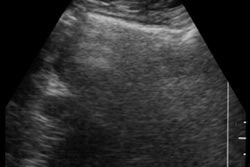(Ultrasound Review) - The purpose of this study from Radiology 215:791–800 was to evaluate the use of power Doppler imaging as a screening tool for detecting carotid artery stenosis.
Stroke has a high mortality risk, and effective screening for carotid disease would be a valuable preventive measure. Power Doppler was chosen because of its increased sensitivity and relative angle independence. In order to be successful, a screening test must be low risk, fast, cost-effective, and have accurate results. Ultrasound has proven to be a safe and rapid diagnostic tool.
Therefore, this study assessed the accuracy of the power Doppler results, as well as the cost per quality-adjusted life-years (QALY). Using ATL HDI UM9 and HDI 3000 systems with a 7–4MHz linear-array transducer, power Doppler was used to obtain longitudinal images of the common carotid artery (CCA) and the internal carotid artery (ICA), and the degree of maximum luminal narrowing was assessed. The diameter of the narrowed ICA was compared with the normal distal portion as described by the NASCET methodology.
One hundred patients were examined, and adequate power Doppler images were achieved in 89%. Technical problems either were due to vessel calcification, with shadowing preventing lumen visualization, or excess vessel movement due to respiration or pulsation.
The study group consisted of mostly asymptomatic patients (71%), and only 22% of the patients had significant stenosis (60% or more). The average examination time for right and left sides was 4.4mins. Using the area under the receiver operating characteristic curve (A zr), as an indicator of accuracy, the A zr was 0.87, the sensitivity was 70% and the specificity was 91%.
This level of accuracy is comparative to the accuracy of mammography (A zr 0.84), a globally accepted screening test. Using power Doppler to screen patients, and duplex Doppler and endarterectomy where necessary, the cost approximates to $47,000 per QALY. In general, up to $50,000 per QALY is considered an acceptable amount.
Because ultrasound is highly operator dependent, the authors recommend that careful monitoring of the quality of the screening program also would need to be implemented.
Radiology 2000 215:791–800
Edward Bluth et al, Dept. of Radiology, Ochsner Foundation Hospital, 1514 Jefferson Highway, New Orleans, LA 70121-2484, USA
By Ultrasound Review
August 16, 2000
Copyright © 2000 AuntMinnie.com



















